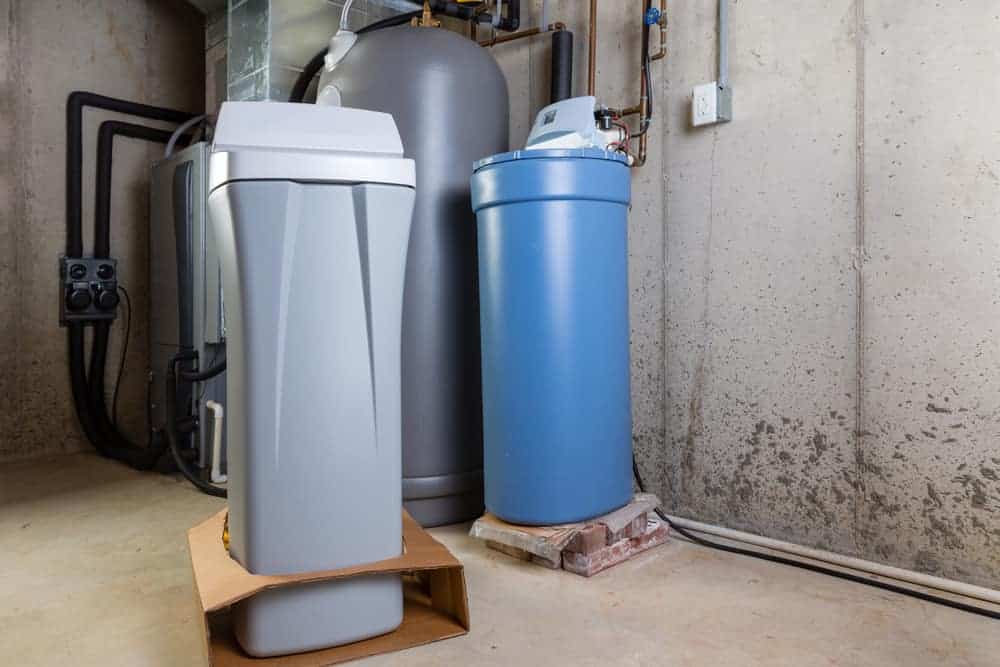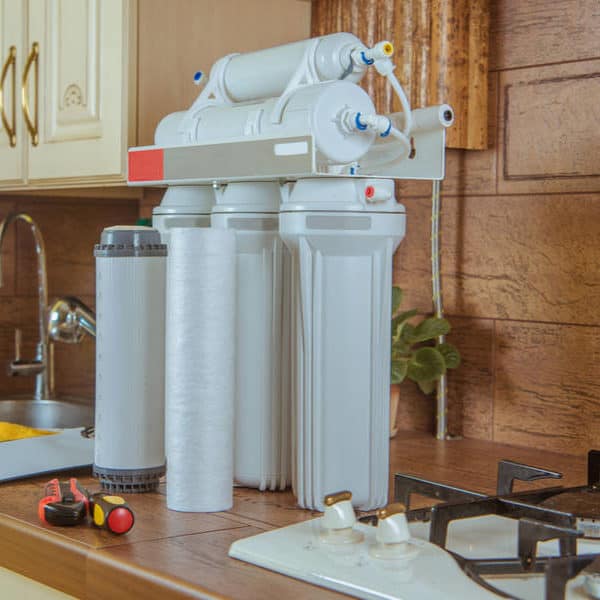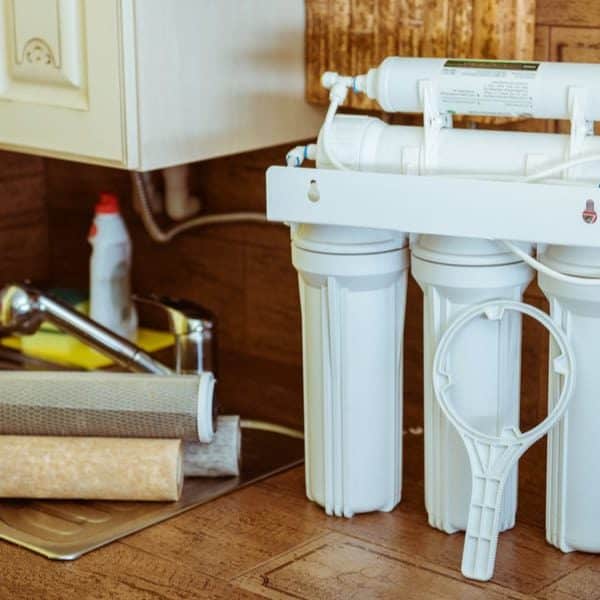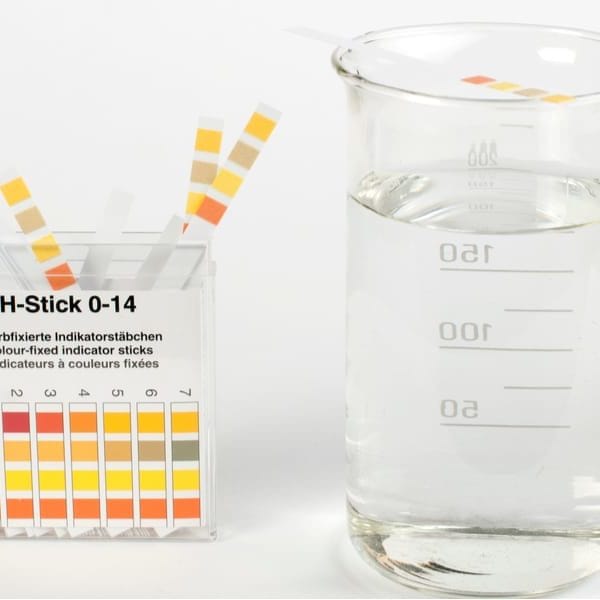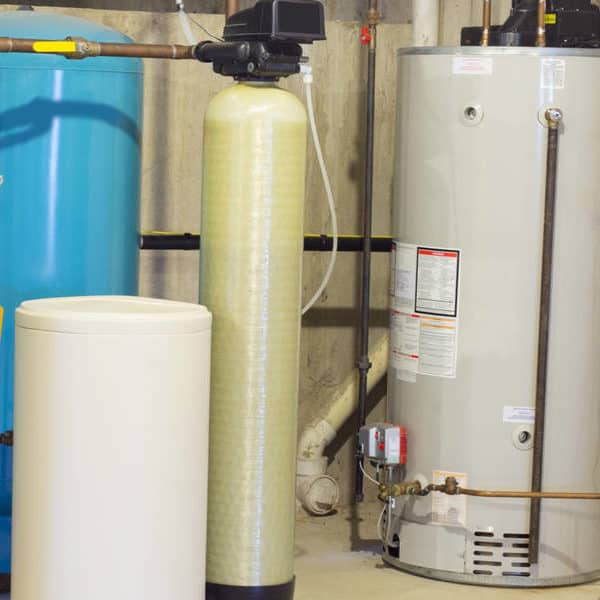Water softeners can is an effective way to tackle water hardness in your home. But they come with several problems that can make you consider other options.
For one, a water softener is quite expensive, and it harms the environment. You will also need to perform maintenance checks regularly.
Also, the pain of carrying heavy bags of salt makes it quite stressful to use. Considering such issues, you should consider looking for water softener alternatives.
In this article, we will show you various methods that can work as a water softener.
Water Softener Alternatives
1. Soften the Water with Electromagnetic Water Unit
This method stands as an ideal water softener alternative as it supplies clean drinking water. The unit purifies the water without dumping harmful substances into the water. It also uses a simple mechanism to produce potable water.
Calcium plays a vital role in our bodies, so the system does not remove this mineral. But other methods of water treatment convert the calcium into sodium. Also, the electromagnetic treatment unit does not harm the environment.
Apart from its cleaning properties, the system does not need frequent salt refills. Overall, it does not cost much to keep it in working order, thereby making it perfect for every budget.
You will also love this product as it does not emit much noise, and it removes unpleasant odors. It can even tackle limescale and prevent any future buildups in your plumbing.
If you have to handle water hardness in ample space, consider installing this system. It even softens water with a high concentration of minerals.
An electromagnetic water treatment unit does not use brine or chemicals. Since it works within a short period, you can call it a perfect substitute for water softener units.
Drawbacks
If you use this unit beside electrical appliances, it can affect its working conditions. This happens because electricity disturbs magnetism in the same location.
Before you can remove hardness with this device, the water should be close to the magnetic area. If the water moves from this position for as long as 48 hours, it will regain its hardness.
2. Template Assisted Crystallization
Instead of installing a whole house water filter, you can use a TAC system. Unlike other treatment options, it does not need excess care, electricity, or chemicals. To keep it in working order, you need to install the unit with the right steps, and keep it clean.
So how does this TAC system work? Well, it uses ceramic polymer balls to remove the dissolved minerals. When these beads meet the salts, they convert them to crystals. In this form, the salts disappear into the water.
But calcium and magnesium will remain in the water. This is good because both elements play vital roles in the body. Unfortunately, regular water softeners destroy these minerals, especially during water treatment.
If you like to go green, you should consider purchasing this device as it does not use toxic chemicals.
Some water treatment products use electronic control valves. Since these valves cost more, it makes the water softener expensive. But if you use a TAC system, you won’t find these valves, thereby making it an affordable option.
When you treat water with a TAC unit, you won’t find any backwash. As a result, there’s no need to connect the product to your drainage.
Moreover, there’s no brine discharge, thereby leading to fewer water bills. You will also save money from potential repairs as the product has a sturdy tank. Apart from its cost-effective options, the unit will not change the test and smell of the water.
Drawbacks
Usually, these products can withstand use with chlorinated water. But to avoid future damage and constant repairs, carbon can come in handy to remove the chlorine, particularly before the water reaches this water softener alternative.
You should also avoid the buildup of iron in the system, as this metal can cause substantial damage. To perform the task, use a screen or any tool to extract the element from the water, especially before reaching the system.
Even if it is a possible rival to other methods, it is durable enough to withstand repeated uses within an extended period.
3. Use Reverse Osmosis System
You can use this device to extract up to 99% of the dissolved minerals buildup in water. This means that passing drinking water through an RO system, make it purified.
This product can also remove impurities, which include chloride and fluoride, leaving your water clean and safe for drinking.
With this method, you will spend less on bottled water because water has the same quality as retail bottled water. You will also enjoy better tasting meals if you use water for cooking.
RO systems do not use gas or electricity. As a result, you will save hundreds of dollars in utility bills. Since it does not need a power source, you can add it to your list of camping trip items.
Furthermore, this kind of water softener alternative consumes more water. Most RO units boast of multiple filters for trapping impurities and pathogens. Even if they come with hefty price tags, they provide one of the cleanest water for human use.
Apart from solid particles, a reverse osmosis system can remove the unpleasant taste of municipal tap water. It even removes the funny smell.
Anyone can maintain an RO system. It only requires a filter change every year, while other models might need a filter swap every two or three years. Yet, the condition of incoming water in your area determines how often you will have to replace the filter.
Drawbacks
If you use this system to treat chlorinated water, the unit might become faulty, thereby resulting in expensive repairs or replacements. Moreover, a reverse osmosis unit works slowly. This feature means you cannot use it, especially if you have to leave your home in a hurry.
Do you hate periodic cleanups? If yes, you should avoid using an RO system because it requires such care. If you forget to sanitize your unit, it will become a breeding ground for mold and mildew. Overall, it will supply polluted drinking water.
Apart from cleaning, you will have to change the filter on the system. But, these parts come with massive price tags that might exceed your budget. So if you plan to invest in an RO unit, prepare to splurge on extra accessories.
4. Electronic Descaler
Instead of using brine, this tool uses nanotechnology that changes the nature of the water. With magnetism, the unit changes the chemical makeup of the dissolved element. This makes the salts inactive by placing them in a suspended form.
When water contains a high concentration of metals like calcium, magnesium, and sulfur, it becomes hard. If you use this water to wash, it can hurt your skin. It even can damage your pipes, clothing, and home appliances.
You can blame this problem on limescale produced by the dissolved metals. From showerheads to pipes, limescale creates clogs, thereby disturbing their performance. With this device, you reduce this chalky residue from your plumbing.
Drawbacks
Unlike other water softener alternatives, this unit treats only running water. So if you plan to clean water in a reservoir or boiler, consider other options.
Moreover, the device cannot work on water containing a high level of hardness. To make it work effectively, use it on the water with a hardness of a maximum of 75 grains per gallon.
5. Electrochemical Water Disinfection
Are you looking for another way to remove hardness without water softener units? If yes, consider trying electrochemical disinfection.
With this method, you can remove salts and pathogens by passing current through the water via fitting electrodes.
Between the water and electrodes, the current produces ozone and other elements that can clean the water. Furthermore, these organic “cleaners” come from the liquid or dissolved salts (e.g., chlorides undergo oxidation to release chlorine).
Even if a few buildings use this form of water treatment, it stands as one of the ideal ways to provide soft and potable water. It’s also safer than most techniques because it does not require the use of chemicals.
If you want to get the purest clean water (with this method), choose electrodes with platinum or platinum oxide coatings.
Wrap Up
A water softener can remove the dissolved minerals that cause hard water. However, it requires constant checks while coming with an expensive price tag. Moreover, it’s not an environmentally friendly option.
Luckily, technology has offered other alternatives that work better than a whole house water filter. Such options include a reverse osmosis system, electromagnetic water units, and TAC systems. You can also consider using an electronic descaler or pass current into the water through electrodes.
Most of these devices cost less than water softeners and even clean water better. They can also handle limescale in your plumbing. But they all have various issues as some cannot work on chlorinated water while others treat water slowly.
We hope you loved our article, and please feel free to share it with your friends on social media. If you have any questions or comments, drop them in the space below.
